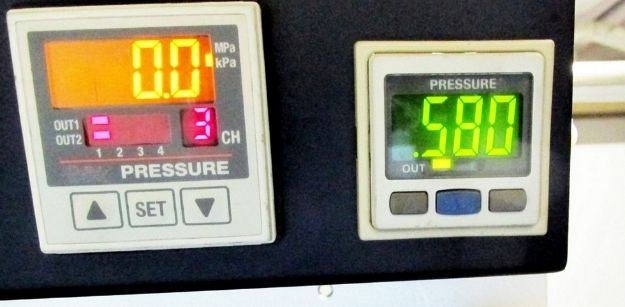A vacuum Control Regulator is typically used to control the inlet and outlet pressure of mechanical devices. The prominent applications of digital vacuum regulators are drying industries where heavy machinery requires such digital tools to regulate the pressure.
Increase Pump Life Expectancy:
They change the vacuum pump. Your system will work better. This is why digital vacuum controllers play an important role. These vacuum pressure controls help manage the vacuum regulation. which can prolong the service life of the pump. If you use the controller incorrectly the pump will not work efficiently. This is why you need to get ahead of problems that will prevent you from having problems in the future. Using a digital vacuum controller can benefit you by reducing electrical energy consumption. This is because the controller will use power when needed.
Pneumatic Pinch Valves:
Pinch valves employ an elastic tubing (sleeve/hose) and a device that directly contacts the tubing (body). Forcing the tubing together will create a seal that is equivalent to the tubing’s permeability.
Below we will discuss its work and some advantages:
Working Process:
At this point, the rubber sleeve of the pneumatic pinch valve is in an outward-tensioned state under fluid pressure in the cavity between the valve body and the rubber sleeve. Since the axial and radial pressures in the sleeve are balanced by the reinforced plies positioned at a specific angle, the sleeve’s length and diameter are not affected by fluid pressure. Pipe sleeves are distorted and obstructed when control gas enters the valve cavity between a sleeve and its housing.
Pneumatically operated valves have flat and oval shells and use little compressed air while in use. This not only saves energy but also ensures that the outer shell of the proportional valve controller bends in the correct direction. Because of the specified lip-shaped bending orientation, even larger solid particles are able to be entirely blocked by the inner liner.
An inner bushing with high resilience is compressed to generate a lip-shaped closure when compressed air (with a pressure differential of 2 bar) enters the valve body of the air-actuated pinch valve. This ensures that the medium flow is reliably turned off at the same time. The inner bushing’s lifespan has been greatly extended. According to the diameter, the working pressure ranges from 2 to 6 bar. Because of the particular inner liner’s robustness and medium pressure, the valve completely opens when compressed air is interrupted.
The working principle of the proportional pneumatic valve shows that the internal medium flow is smooth, the friction resistance is very low, there is no leakage, and the valve itself is very light. Particulate, powdered, and pellet materials, dust, and solid-containing liquids are all good candidates for this device’s shutoff, adjustment, and quantitative wear and tear capabilities.
Ending words:
This is how the design should be: low weight, simple, strong, and straight through. The least amount of turbulence or friction possible. The media does not impede the flow of information. There isn’t any cross-contamination.













